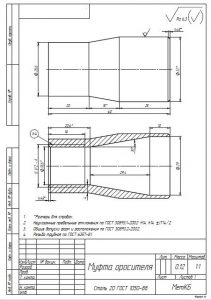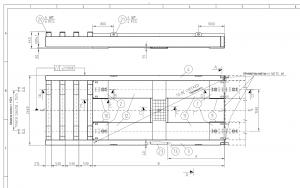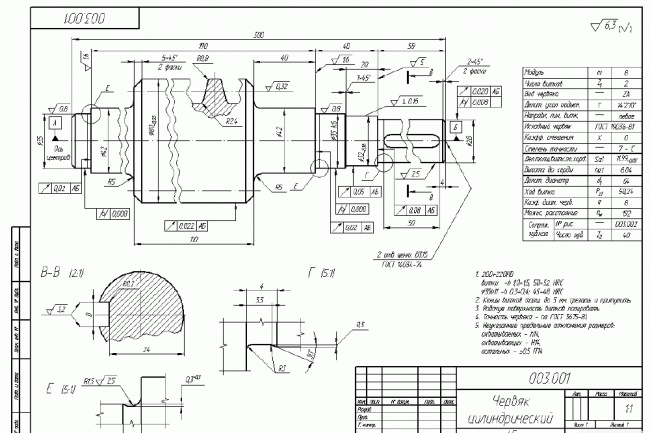Construction texts refer to technical documentation that is distinguished by the terminological richness of phrases and the structural complexity of sentences. Their inherent clear lexical and grammatical connection of speech structures and the frequent use of specialized designations complicate the correct interpretation of messages. Such a translation characterizes the laboriousness of the selection of Russian-language analogs that exactly correspond to foreign language units.
Translation stylistics of construction documents
When translating documentation on construction topics, it is necessary to preserve the clarity of the formation of speech structures inherent in the norms of the technical language. When choosing the appropriate terminology, one should take into account the peculiarities of phraseology, which is characterized by the wide and frequent use of specialized narrow-profile phrases.
The specificity of the stylistics is the use of professional jargon inherent in narrow branches of the sphere. Interpreting them, it is necessary to characterize specific concepts using general definitions taking into account the linguistic norms of technical texts. At the same time, it is not always possible to clearly define directly the construction object in question, especially if the translator takes on only a part of the original text.
Construction documents are characterized by:
frequent use of abbreviations in diagrams;
saturation with jargon, terms;
the multiplicity of phraseological units;
polysemy of verbal units;
brevity, compactness, emotional facelessness of texts.
When translating thematic blocks related to specialized equipment or building materials, one should take into account the lexical and grammatical features of speech structures. The mutual replacements of parts of speech inherent in such texts, the widespread use of cause-and-effect unions, the use of logical connectives significantly complicate the interpretation of lexemes, since they require a complete understanding of industry specifics.
It should be understood, however, that documents related to construction issues are by no means always purely technical. In construction documentation, there is a kind of mixing of genres, where purely technical texts are interspersed with legal, economic or general texts on the one hand, and on the other hand, they may contain narrow-profile documents on geological exploration or electrical engineering. All this leads to the fact that the translation of one work plan may require the involvement of a large number of translators of different qualifications.
Features of translation of construction documents
The saturation of graphs, diagrams, plans with their characteristic numerous abbreviations, abbreviations, units of measurement determines the complexity of their correct interpretation by a linguist. Translation of GOSTs, drawings, tables requires a deep understanding of terminology, the ability to find exact analogs in Russian.
When translating labor safety instructions, specifications, TUE equipment, work execution plans, one should observe the brevity, laconism of the formation of emotionally impersonal speech blocks, while maintaining technical literacy. Incorrect interpretation can lead to gross technological errors.
Areas of application for translation of construction documents
The international partnership of construction holdings provides for the need for a constant exchange of documents. A clear division of the process among several participants leads to an increase in the effectiveness of the activities being implemented. At the same time, the translation of plans for coordinating work between the contractor, subcontractor and general contractor organizing large-scale construction should be carried out taking into account the regional characteristics of industry language norms. Recently, due to globalization processes, more and more often on large construction sites one can see not only representatives of different countries, but also speakers of different languages, which turns the construction site into a small world inhabited by people who do not understand each other. In this case, in order to minimize translation costs, it is necessary to select specialists-translators and organize the construction process so that the smallest number of linguists can carry out their activities as efficiently as possible.
The involvement of a specialized linguist allows you to establish contact between workers on the construction site of large and small objects. Possessing the skills of oral and written industry-specific translation, he will help to organize the process correctly and avoid misunderstandings between employees.
Professional skills of a translator
Construction texts that differ from technical documentation in the abundance of narrow-industry terms, cliché phraseological units, and a large number of abbreviations will be correctly translated by a linguist who:
owns two specialized education;
observes stylistic norms, lexical and grammatical rules for the formation of linguistic structures;
correctly interprets the numerical indicators of various quantities according to the measurement systems adopted in the countries;
is fluent in the terminology of the industry, taking into account the active dynamics of its replenishment with new lexical elements;
skillfully operates with polysemantic concepts, correctly conveying the meaning of the original message.
The high qualification of a linguist guarantees the correct translation of construction documents.
